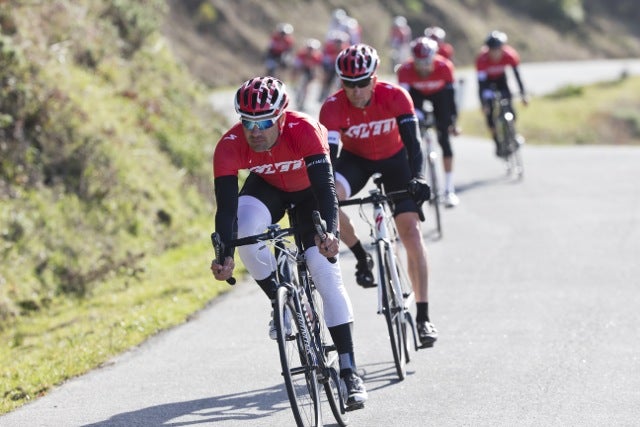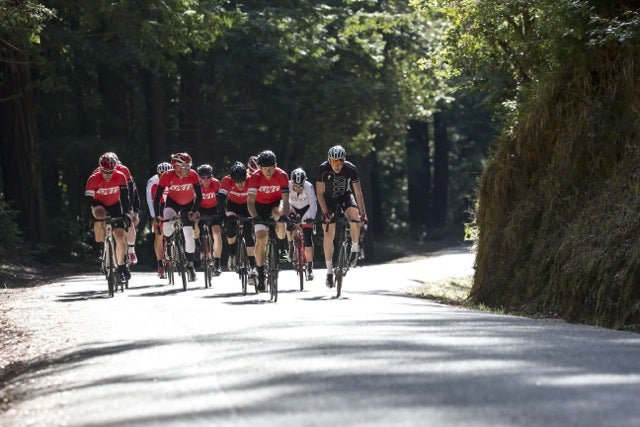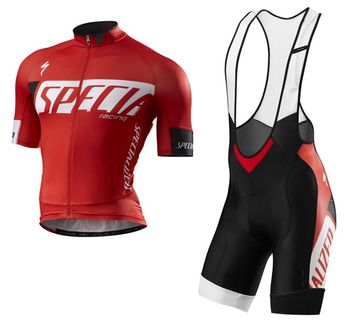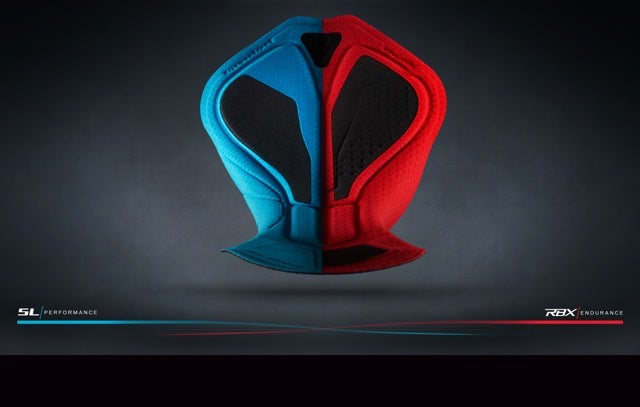
In Morgan Hill, California, last Saturday morning, a small peloton riding a phalanx of Roubaix SL4s, Tarmacs, and Venges rolled out on a loop that Specialized CEO Mike Sinyard calls . The 60-mile circuit, one of Sinyard’s favorite weekend jaunts, takes in two famous area climbs, including the perennial Tour of California hump up Tunitas Creek, as well as plunging descents, pastoral hills, and a coastal stretch with views over the infamous Mavericks surf break.
This wasn’t, however, Sinyard’s standard weekly tour. It was the culmination of two years of work by his company to reinvent its apparel program, and everyone in the 30-strong group, half journalists (myself included) and the remainder Specialized employees and racers, were decked from helmet to cleat in red and white S-branded gear.

“Apparel used to be something of an afterthought at Specialized,” says Peter Curran, who was brought on from Pearl Izumi to revamp the soft goods program. “When he hired me, Mike [Sinyard] was like, 'What we are doing currently is not acceptable. Our apparel has to be every bit as good as our bikes, as good as everything else we make.'”
To accomplish that, Specialized dedicated an eight-man team to the project and created a sewing room on sight in Morgan Hill so they could prototype apparel quickly and tweak patterns as soon as they received feedback from testers. The facility allows the company to go from design to rideable product in a matter of hours. “We could literally send guys out in samples on the lunch ride, collect and incorporate their feedback afterward, and have improved samples for the lunch ride the next day,” Curran says. Prior to creating the sewing room, when Specialized prototyped out of Asia, that process could take as long as four months. During my visit to the sewing room last weekend, Curran showed racks full of tested samples from the company's daily lunch rides, and his head seamstress crafted a pair of bottoms from pattern to finished bibs while we watched. Once the designs are nailed, production is in California, Mexico, and Asia.

According to Curran, Specialized's new apparel is built around three main ideas. First, each garment, like every bike the company builds, is created for what Curran calls, “experience-specific riding.” In the same way that the and the appeal to different styles of riders, Specialized has built two distinct lines of gear: SL has trimmer fits, bolder graphics, and fewer pockets; RBX is cut more generously, incorporates more cargo space for longer rides, and has nice little details like sweat-proof pockets for phones and media. Each line comes in a premium Pro level finish and then tiers down to Expert, Comp, and Sport levels, and there are women's specific and mountain bike lines, as well. Prices start at $175 for the Pro level bibshorts and scale down to $60 accordingly.

The mainstay of the revamped line are the two new chamois, also available in SL- and RBX-specific finishes. As an intrinsic part of the Specialized Body Geometry fit system, each chamois is optimized to fit and work with Specialized saddles, though Curran is quick to add that the pads work fine with other brand's saddles, too. “The shapes and designs are patterened after the saddles and use pressure mapping to promote blood flow,” Curran says. “They're sewn with carbon yarns, too, for anti-static and anti-microbial properties.” The SL chamois is narrower and uses closed-cell foam for a firmer performance fit, while the RBX is broader and constructed with gel for all-day comfort. Both use seamless construction and, except for the center channel, few contours to avoid chafing and rubbing.

Finally, every piece in the line employs what Specialized calls Deflect UV, meaning all garments are certified by the U.S. Skin Cancer Foundation to have UPF 30 protection or higher. “Having the shorts and jersey tan lines has become something of a badge of honor with cyclists,” says Kevin Franks, equipment product marketing manager at Specialized. “But we have to get the word out about how dangerous that is.” Franks learned this firsthand during the apparel development process when a dermatologist took a look at a suspicious-looking spot on his arm and eventually diagnosed it as basal cell carcinoma. “It was just from too many years riding without protection,” he says. “Tan lines are bullshit. We need to get that message to cyclists. That's why we decided to build the ultraviolet protection straight into every one of our garments.”
I don't have much experience with Specialized's past apparel line, but the new garments look like they are on par with other premium lines such as Pearl Izumi, Castelli, and Capo. The cuts are more generous than other brands—whereas I ride size medium and sometimes even large in European brands like Assos and Mavic, I am a solid small in both the SL and RBX gear. And though I have ridden in the gear only once, so far the fit and finish look solid. On The Big Easy ride, the SL bibs virtually disappeared beneath me, which in my book is the finest praise for a pair of cycling shorts. If you don't notice them, they are likely doing their job.
Look for a full review of the new apparel line in coming months as we spend more time in the gear.
—Aaron Gulley